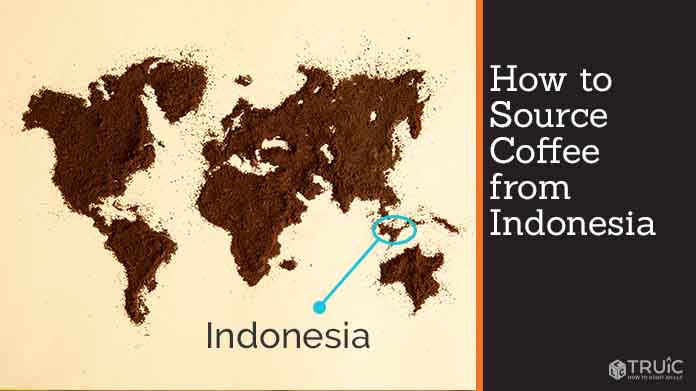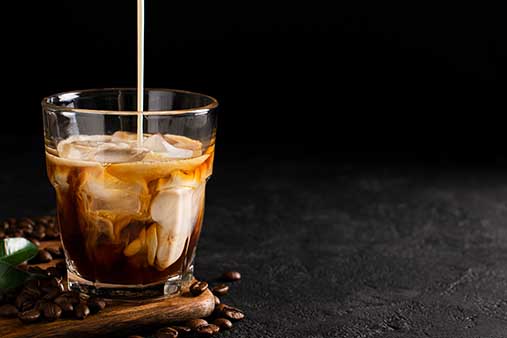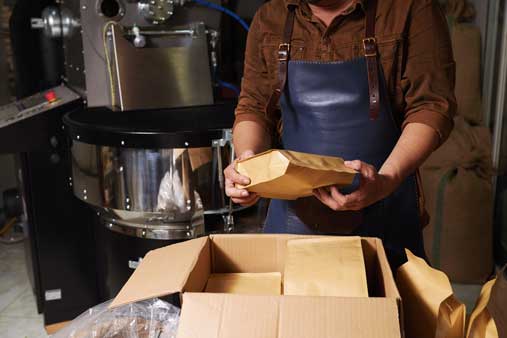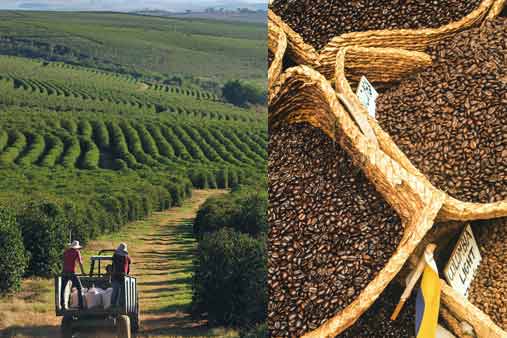How to Source Coffee From Indonesia
Indonesia is one of the top coffee-producing countries in the world, and coffee is its fourth-largest export after rubber, palm oil, and cocoa. Because, like Vietnam, Robusta beans represent about 90% of Indonesia’s coffee exports (instead of the coveted Arabica beans), Indonesian coffee isn’t as commonly found at third-wave roasters. However, Indonesia still produces high-quality coffee to source and enjoy.
Recommended: Read our full, in-depth How to Start a Coffee Shop Business guides, inspired by coffee professionals, they will help make your coffee dreams real, from sourcing beans to hiring baristas, choosing the best POS system, forming an actual company, and everything in between.

A History of Indonesian Coffee
Indonesia began exporting coffee with the Dutch East India Company in 1711. The company determined Indonesia had an ideal climate for coffee production and expanded its coffee agriculture into the regions of Bogor and Sukabumi followed by areas of Java as well as the islands of Sumatra and Sulawesi.
In the beginning, Indonesia only exported Arabica beans. However, in the 1870s, the country experienced an overwhelming amount of leaf rust that wiped out its Arabica coffee production.
Today, small farms produce the majority of Indonesia’s coffee on properties of around one to two hectares. Despite the similarities between Indonesian and Vietnamese coffee production, farm size is the main difference: Vietnam boasts more large-scale farms that produce its vast quantity of Robusta beans.
However, Indonesia is home to the most expensive coffee in the world: Kopi Luwak. These coffee cherries pass through the digestive tract of an Asian palm civet, which ferments the beans. This unusual process makes Kopi Luwak coffee not only expensive, but also rare and controversial.
Indonesian Coffee Production
Indonesian coffee farmers typically use the giling basah or “wet hulling” method to process their beans, which produces a unique flavor profile. It starts with picking and pulping the coffee using a hand drum to remove the skin from the coffee cherries. The farmers then ferment the coffee overnight in a polypropylene bag, a plastic tub, or a concrete tank.
Then, instead of completely drying their coffee and removing the parchment after this step as typically done in wet processing, Indonesian farmers dry their beans to just 50% dryness before selling them. This enables the farmers to make the highest amount of money for the least amount of labor.
Regional Differences
Here’s a guide to the key characteristics found in Indonesia’s main coffee-growing regions:
Bali
-
Flavor Profile: Coffee from this region grows between two volcanoes in the central highlands of Indonesia. While fairly new to specialty coffee production, Bali is responsible for some of Indonesia’s best coffee. Its rich volcanic soil, natural manure, and shade-growing practices allow Bali’s beans to mature slowly. This makes them sweeter and more nutrient-dense.
- Processing Format: Washing is the most common method in this region, which produces coffee in very small volumes, with dry processing used only occasionally.
- Average Harvest Season: May to October
Sumatra
-
Flavor Profile: Sumatra produces some of the world’s best-tasting, low-acidity coffees — Mandheling, Lintong, and Aceh:
- Grown in the west-central region of Sumatra, Mandheling coffee has a smooth and syrupy body with notes of chocolate and spices. It takes its name from the native residents of northern Sumatra, the Mandailing people.
- Southwest of Lake Toba, the Lintong region produces coffee known for its medium body and low acidity with notes of cedar and spices. This high-quality coffee has brighter notes with less mouthfeel than many of its Indonesian counterparts.
- The Aceh region — located in the northernmost part of Indonesia and also referred to as the Gayo region — produces clean, minimally complex coffee with balanced acidity compared to its neighboring regions.
- Processing Format: Giling basah (also called the “wet-hulling” method)
- Average Harvest Season: November to March
Sulawesi
-
Flavor Profile: Nearly all coffee from this region comes from the southern side of the island, otherwise known as the Toraja region. As some of the highest-grown coffee in Indonesia, it boasts low acidity while maintaining a rich, full body. Tasting notes typically include chocolate and ripe fruit.
Given this region’s high elevation (between 1,400 and 1,900 meters above sea level), many of its coffees qualify for Strictly High Grown (SHG) coffee status. This means the coffee cherries mature slowly and produce a sweet, nutrient-dense bean.
- Processing Format: Washed in large estates and giling basah (also called the “wet-hulling” method) on small farms
- Average Harvest Season: May to November
Java
-
Flavor Profile: Grown on the east side of the Ijen volcano complex at about 1,400 meters above sea level, coffee from Java typically contains bright acidity, a heavy body, and nutty, chocolatey tasting notes. These coffee beans also have a far less earthy flavor than those grown in Sumatra or Sulawesi.
The finest coffee from this region comes from a few large estates established by the Dutch in the 18th century. These estates include Blawan (the biggest producer), Jampit, Kayumas, and Pancoer. Another unique trait of this region includes its aged or “monsooned” coffees, which farmers process for three years to dramatically decrease the acidity while increasing sweetness and body.
- Processing Format: Washed
- Average Harvest Season: June to October
Flores
-
Flavor Profile: Almost all coffee production on this island occurs in the town of Bajawa with all the area farmers divided into 12 co-ops. These co-ops work together to bring the coffee of each producer to market. This region’s coffees deliver a slightly sweeter flavor profile than other Indonesian coffees with milk chocolate and cocoa tasting notes and a smooth, yet rich, body.
- Processing Format: Giling basah (also called the “wet-hulling” method)
- Average Harvest Season: May to October
Former Indonesian Regions
After East Timor (Timor-Leste) and Papua New Guinea both gained independence from Indonesia, their place on the list of Indonesian coffee-producing regions grew a bit controversial. However, their former association with Indonesia — as well as their coffee’s similar characteristics — make their inclusion here important. This article, therefore, also highlights these two coffee-producing neighbors:
East Timor (Timor-Leste)
-
Flavor Profile: The political history of this island is long and complex: the eastern side gained independence from Indonesia in 2002, and Indonesia continues to govern the western side. Farmers use a fully washed processing method to produce coffee with a crisp, clean flavor profile and a body similar to many Indonesian coffees.
- Processing Format: Washed
- Average Harvest Season: June to September
Papua (Papua New Guinea)
-
Flavor Profile: This nation also shares political strife with its once-governing country — Australia — from which it gained independence in 1975. Half of Papua New Guinea, known as Papua, remains governed by Indonesia.
The Papua region produces coffee on large estates as well as with small growers divided into co-ops to ensure quality and boose exports. Using a fully washed process, this region’s farmers produce coffee with crisp and subtle tasting notes much purer than its neighbors.
- Processing Format: Washed
- Average Harvest Season: April to September
A Special Note on Importing Indonesian Coffee
Sourcing coffee from Indonesia works a bit differently than in most other coffee origins. While it’s not impossible to buy directly from Indonesian coffee farmers, it’s uncommon. In order to source coffee from these regions, green coffee importers must work with local distributors and brokers to import into the United States and Canada.
In many of these regions, co-ops that encompass many small farms, mills, and larger estates will bring their coffee to market for export to other countries. These co-ops ensure the quality of the coffee and make transport easier for local producers. You can then buy exported Indonesian coffee beans from the brokers and importers with which you typically work in order to supply your roastery.
Check out our wholesale coffee sourcing guide which includes information about regions, processing, and buying directly from coffee farmers.


